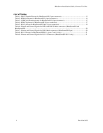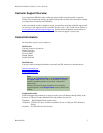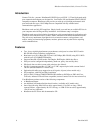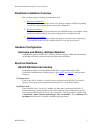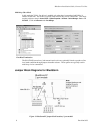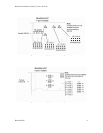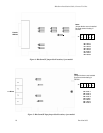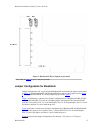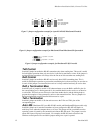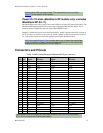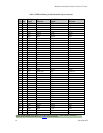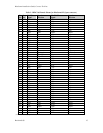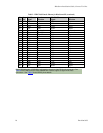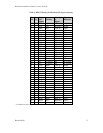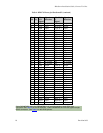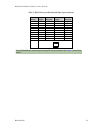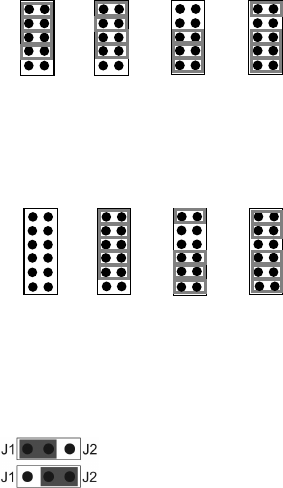
BlueStorm Installation Guide, Connect Tech Inc.
12 Revision 0.08
Figure 7: Jumper configuration example for 4 port RS-422/485 BlueStorm/LP models
Figure 8: Jumper configuration example for BlueStorm/SP and BlueStorm/SP Opto models
Figure 9: Jumper configuration examples for BlueStorm/SP RJ-11 models
TxD Control
Install this jumper to enable the RS-485 transmitter only when sending data. This mode is useful
for half-duplex operation when only one device is allowed to send data at a time. If the jumper is
not installed, the transmitter will always drive the line to an idle state when not sending data.
RxD Control
Install this jumper to enable the RS-485 receiver only when NOT transmitting data. This is
useful for half-duplex operation to prevent the transmitting device from receiving its own data as
it sends. If this jumper is not installed, the receiver is always enabled and ready to receive data.
RxD ± Termination/Bias
Install this pair of jumpers to enable a 150 ohm terminator across the RxD+ and RxD- pins for
the corresponding port. A biasing network is also enabled that drives the receiver to an inactive
or safe mode. The receiver can still receive data from another device and the biasing helps to
prevent the reception of data generated by noise on the transmission line. The two jumpers for
RxD termination/bias must be installed and removed as a pair.
TxD ± Termination
Install this jumper to enable a 150 ohm resistor across the TxD+ and TxD- pins of the
corresponding port.
Auto 485 (BlueStorm/LP 2 port RS-422/485 models and BlueStorm/SP Opto models only)
Install this jumper to tri-state the transmitters of ports configured as RS-485 half duplex or
multi-drop slave when the computer boots or is reset. This jumper will be overridden once the
operating system is booted by the current driver/software RS-485 mode. The jumper is used to
ensure that a port will power-on tri-stated. For example, the RS-485 mode selection in the
Windows control panel will override this jumper setting once a port is opened.
JD1
JD2
JD3
JD4
JD5
JA
JD1
JD2
JD3
JD4
JD5
JB
Port 1
Port 2
JD1
JD2
JD3
JD4
JD5
JC
Port 3
JD1
JD2
JD3
JD4
JD5
JD
Port 4
TxD control
RxD control
RxD ± Termination/Bias
RxD ± Termination/Bias
TxD ± Termination
JA
JB
Port 1
Port 2
JC
Port 3
JD
Port 4
RS-485 selection
TxD control
RxD control
RxD ± Termination/Bias
RxD ± Termination/Bias
TxD ± Termination
JA0
JA1
JA2
JA3
JA4
JA5
JB0
JB1
JB2
JB3
JB4
JB5
JC0
JC1
JC2
JC3
JC4
JC5
JD0
JD1
JD2
JD3
JD4
JD5
J1 position = +5V power
J2 position = +12V power



